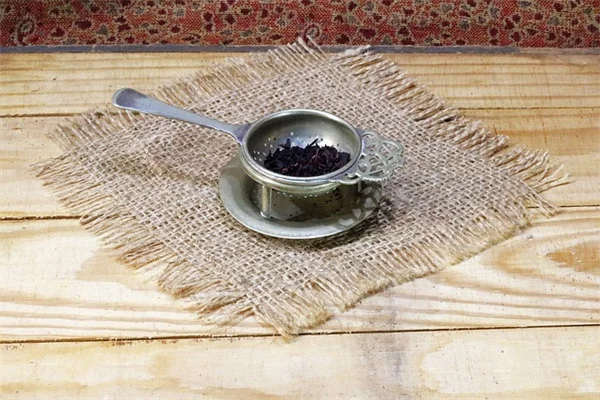Can switching to salt substitutes really help your heart? The answer is absolutely yes! A groundbreaking new study shows that replacing regular salt with potassium-based alternatives can lower your risk of dying from heart disease by reducing blood pressure almost as effectively as medication. I've been following this research closely, and the results are too important to ignore - especially when heart disease remains America's #1 killer.Here's what you need to know: The study analyzed data from 16 clinical trials and found that people using salt substitutes had better cardiovascular outcomes compared to those using regular table salt. As a preventive nutrition specialist, I can tell you this isn't surprising - we've known for years that excessive sodium damages blood vessels and strains your heart. But what's exciting is how simple the solution can be!In this article, I'll break down exactly how these substitutes work, which ones are most effective, and give you my pro tips for making the switch without sacrificing flavor. Whether you're dealing with high blood pressure or just want to eat healthier, these findings could literally be a lifesaver.
E.g. :Hims & Hers Semaglutide: Affordable Weight Loss Solution Explained
Why Your Salt Habit Might Be Killing You Slowly
The Shocking Truth About Salt and Heart Disease
Let me ask you something - do you really know how much salt you're eating every day? Most Americans don't, and that's a big problem. That innocent-looking salt shaker on your table could be putting you at serious risk for heart disease.
Here's what the latest research shows: A massive review of 16 different studies found that people who switched to salt substitutes had lower blood pressure and reduced risk of dying from heart problems. The numbers don't lie - these substitutes worked almost as well as prescription blood pressure medications!
How Salt Wrecks Your Heart
Think of your blood vessels like garden hoses. When you pump too much salt into your system, it's like turning the water pressure way up. Over time, that constant pressure causes damage.
Michelle Routhenstein, a heart health expert, explains it perfectly: "Excessive salt leads to three big problems - high blood pressure, damaged arteries, and fluid buildup. This triple threat dramatically increases your chances of heart attacks and strokes."
Salt Substitutes That Actually Work
 Photos provided by pixabay
Photos provided by pixabay
The Potassium Powerhouse
The most effective substitutes replace some regular salt (sodium chloride) with potassium chloride. Here's why this works:
| Type | Sodium Content | Bonus Benefits |
| Regular Salt | 100% sodium chloride | None |
| Potassium-Based Substitute | 60-75% sodium chloride | Lowers blood pressure |
But here's something most people don't realize - you can't just dump these substitutes into your food like regular salt. Chelsea Johnson warns: "Too much potassium can cause dangerous heart rhythms. We're talking about small substitutions, not free pouring!"
Other Flavor Boosters
Who says you need salt at all? Try these alternatives:
- Fresh lemon or lime juice (instant flavor boost!)
- Garlic and onion powder (way more interesting than salt)
- Smoked paprika (adds depth to any dish)
- Nutritional yeast (cheesy flavor without the sodium)
Simple Swaps You Can Make Today
Reading Labels Like a Pro
Did you know that most of our salt intake comes from packaged foods? Here's a scary fact - that "healthy" canned soup might contain your entire day's sodium allowance in one bowl!
When shopping, look for these magic words on labels:
"Low sodium" = less than 140mg per serving
"No salt added" = your best bet
"Reduced sodium" = better than regular, but check the numbers
 Photos provided by pixabay
Photos provided by pixabay
The Potassium Powerhouse
I get it - cooking from scratch every night isn't realistic. But here's what works for me:
1. Batch cook on Sundays (less temptation to order takeout)
2. Keep frozen veggies on hand (they're pre-chopped and low-sodium)
3. Make your own seasoning blends (way cheaper than store-bought)
Pro tip: Remove your salt shaker from the table completely. Out of sight, out of mind!
When Salt Substitutes Aren't Enough
The Potassium Balancing Act
Here's a cool trick - pair salty foods with potassium-rich options to balance things out. Some great choices:
- Sweet potatoes (bake them like regular potatoes)
- Bananas (nature's perfect snack)
- Spinach (throw it in smoothies if you don't like salads)
- Beans (cheap, filling, and packed with nutrients)
Dining Out Without the Salt Bomb
Restaurants are salt traps, but you can navigate them:
- Ask for sauces on the side (you'll use way less)
- Choose grilled over fried (automatically cuts sodium)
- Request no added salt (most chefs will accommodate)
- Share entrees (portion sizes are insane anyway)
Making the Transition Easier
 Photos provided by pixabay
Photos provided by pixabay
The Potassium Powerhouse
Here's the good news - your taste for salt changes in about 2-3 weeks. The first few days might feel bland, but stick with it. Soon, regular restaurant food will taste way too salty!
Start small:
Week 1: Replace 25% of your salt with substitutes
Week 2: Go up to 50%
Week 3: Try 75%
By month's end, you might not miss regular salt at all!
Emergency Flavor Solutions
When food tastes blah without salt, try these instant flavor fixes:
- Hot sauce (just a few drops go far)
- Fresh herbs (basil, cilantro, or parsley)
- Citrus zest (freeze lemon peels for easy access)
- Toasted nuts or seeds (adds crunch and flavor)
The Bigger Picture of Heart Health
More Than Just Salt
While cutting salt helps, don't forget other heart-healthy habits:
- Move more (even short walks count)
- Manage stress (try deep breathing exercises)
- Get enough sleep (7-8 hours is ideal)
- Stay hydrated (water helps flush excess sodium)
When to See a Doctor
If you're dealing with high blood pressure or heart issues, these changes can help - but they're not a substitute for medical care. Always consult your doctor before making major diet changes, especially if you're on medications.
Remember: Small changes add up to big results over time. Your future self will thank you for taking care of your heart today!
The Hidden Salt in Your Favorite Foods
Breakfast Bombs You Didn't See Coming
You might think you're starting your day right with that bowl of cereal, but here's the kicker - many breakfast cereals contain more salt per serving than potato chips. I'm not joking! That "healthy" bran muffin at your local coffee shop? Probably packing about 400mg of sodium before you even add butter.
Let me share my personal breakfast transformation. I used to grab a breakfast sandwich every morning until I realized it was giving me nearly half my daily sodium before 9am. Now I do overnight oats with cinnamon and fresh fruit - same convenience, way less salt, and honestly? Tastes better once you get used to it.
The Sneaky Salty Snacks
Pretzels might seem like a "better" choice than chips, but ounce for ounce, they often contain more sodium. And don't get me started on canned soups - that "healthy" chicken noodle can easily hit 800mg per serving (and who eats just one serving?).
Here's a fun experiment you can try at home: Compare the sodium in these common snacks:
| Snack | Sodium (mg) | Better Alternative |
| 1 oz pretzels | 385 | Air-popped popcorn (2mg) |
| 1 oz potato chips | 170 | Kale chips (150mg) |
| 1 tbsp soy sauce | 920 | Coconut aminos (270mg) |
Salt and Your Brain: The Surprising Connection
How Salt Affects Your Mood
Ever notice how you feel sluggish after a super salty meal? Could your salt habit be messing with your mental health? New research suggests high-salt diets might contribute to depression and anxiety. The theory is that excess sodium disrupts your gut microbiome, which directly communicates with your brain.
I've personally noticed that when I cut back on salt, my afternoon energy crashes disappeared. My friend Sarah (who's a therapist) says several of her clients report better mood stability after reducing processed foods and their hidden salt content.
The Memory Connection
Here's something that might surprise you - high blood pressure from too much salt can actually reduce blood flow to your brain. Over time, this might increase your risk for cognitive decline. Think about that next time you're reaching for those salty fries!
But don't panic - the good news is that the brain is resilient. Studies show that when people lower their sodium intake, they often see improvements in memory tests within just a few months. That's motivation right there to put down the salt shaker!
Cultural Differences in Salt Consumption
How America Became Addicted to Salt
Did you know the average American consumes about 3,400mg of sodium daily, while the World Health Organization recommends less than 2,000mg? We're eating nearly double what we should be! But here's the interesting part - many other cultures use far less salt while maintaining delicious cuisines.
Take Japanese cuisine, for example. While they do use soy sauce, traditional meals balance it with fresh fish, vegetables, and fermented foods that provide umami flavor without excessive sodium. Italian cooking? Relies on fresh herbs, garlic, and olive oil for flavor rather than salt.
Learning From Low-Salt Cultures
We could take some notes from these cultures:
- Use more fresh herbs and spices (Indian cuisine is a masterclass in this)
- Embrace fermentation (kimchi, sauerkraut add flavor with less salt)
- Cook with aromatic bases (French mirepoix, Spanish sofrito)
- Let natural flavors shine (perfectly ripe tomatoes need little enhancement)
My neighbor Mrs. Chen (who's from Taiwan) taught me her trick - she uses mushroom powder instead of salt to boost flavor in soups. It's become my secret weapon in the kitchen!
The Science Behind Salt Cravings
Why We Can't Resist Salty Foods
Ever wonder why salty snacks are so addictive? There's actual science behind those cravings. Our brains are wired to seek out salt because it was scarce in prehistoric times. But in today's world of abundance, that same wiring is working against us.
Food manufacturers know this all too well. They've perfected what's called the "bliss point" - the perfect amount of salt that makes you want to keep eating. That's why it's so hard to eat just one chip! The good news? You can retrain your taste buds to be satisfied with less salt.
Breaking the Salt Habit
Here's what worked for me when I decided to cut back:
1. Cold turkey doesn't work - gradual reduction is key
2. Focus on adding flavors, not just removing salt
3. Stay hydrated (sometimes thirst masquerades as salt cravings)
4. Get enough sleep (fatigue increases cravings for salty snacks)
Pro tip: When a salt craving hits, try a handful of salted nuts instead of processed snacks. You'll satisfy the craving while getting healthy fats and protein that help stabilize your blood sugar.
Salt and Exercise Performance
The Athlete's Salt Dilemma
If you're active, you've probably heard about replacing electrolytes lost through sweat. But here's the thing - most recreational athletes don't need those fancy sports drinks packed with sodium. Unless you're doing intense exercise for more than an hour, plain water is usually sufficient.
I learned this the hard way when training for my first 5K. I was chugging sports drinks thinking I needed the electrolytes, only to feel bloated and sluggish. My running coach set me straight - for moderate exercise, a banana and water does the trick!
Finding Your Personal Balance
Everyone's sweat rate and sodium loss is different. Here's how to find what works for you:
- Notice if you have salt crystals on your skin after exercise (sign of heavy sodium loss)
- Pay attention to cramping (might indicate electrolyte imbalance)
- Weigh yourself before and after workouts (significant weight loss means you're losing lots of fluid)
- For most people, eating normally after exercise replaces what you've lost
Remember: Unless you're an endurance athlete, you probably don't need to supplement with extra salt. Your regular diet likely provides plenty!
E.g. :Mayo Clinic Minute: Are you using a salt substitute? - Mayo Clinic ...
FAQs
Q: How do salt substitutes actually help my heart?
A: Salt substitutes work in two powerful ways to protect your heart. First, they contain less sodium than regular table salt - typically 25-30% less. This immediately reduces the fluid retention and blood vessel damage caused by excess sodium. Second, most quality substitutes contain potassium chloride, which actively helps lower blood pressure. It's like getting a two-for-one heart health benefit! As cardiology dietitian Michelle Routhenstein explains, this combination "helps control blood pressure while potentially reducing strain on the heart muscle." Just remember - moderation is key, as too much potassium can be dangerous for some people.
Q: What's the best salt substitute for beginners?
A: If you're new to salt substitutes, I recommend starting with a blend that's 75% sodium chloride and 25% potassium chloride. This gives you enough familiar salty taste while introducing the heart-healthy benefits of potassium. Look for brands like Morton Salt Substitute or NoSalt in your grocery store's spice aisle. Pro tip: Mix it half-and-half with your regular salt at first - your taste buds will adjust gradually without shocking your system. After about 2-3 weeks, you can increase the substitute ratio.
Q: Are there risks to using salt substitutes?
A: While generally safe for most people, salt substitutes aren't right for everyone. The potassium content can be dangerous if you have kidney problems or take certain medications (like ACE inhibitors or potassium-sparing diuretics). That's why I always tell my clients to check with their doctor first - especially if you have existing health conditions. Another risk is overusing substitutes thinking "more is better." They're still a form of salt and should be used sparingly. When in doubt, consult a registered dietitian for personalized advice.
Q: How much sodium should I actually be eating daily?
A: The American Heart Association recommends no more than 2,300mg of sodium per day, with an ideal limit of 1,500mg for most adults. To put that in perspective, just one teaspoon of regular table salt contains about 2,300mg! Here's what shocks my clients: A single fast food meal can easily exceed your entire day's allowance. My practical advice? Focus on cooking more meals at home using fresh ingredients, read nutrition labels religiously, and gradually reduce your salt use. Small changes make a big difference over time.
Q: What are some non-salt ways to add flavor to food?
A: As a food lover myself, I've discovered countless delicious alternatives to salt! My top picks include fresh citrus juice (lemon or lime brightens any dish), garlic and onion powder (more flavor complexity than plain salt), smoked paprika (adds depth to meats and veggies), and nutritional yeast (gives a savory, almost cheesy taste). Fresh herbs like basil, cilantro and rosemary are game-changers too. The key is experimenting to find combinations you love - your taste buds will adapt surprisingly fast when you give them exciting new flavors to enjoy!





